SEO
Google Doesn’t Care About AI Content. Here’s Why.
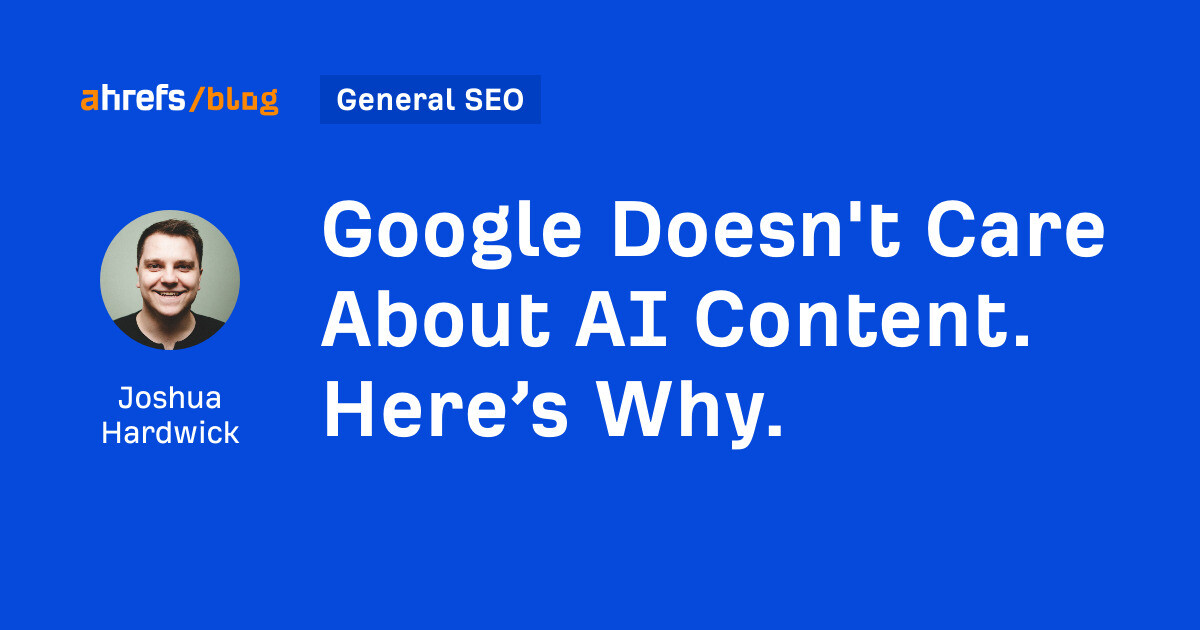
This seemed to come as a bit of a shock to some, but I think there are three reasons why it makes total sense.
If you’ve ever been asked what you think of someone’s website, you’ll know just how low most people’s bar is when it comes to content quality. They order a few dozen articles from Fiverr and expect you (and Google) to be impressed.
The impact of AI will lower the cost of this type of content. Folks no longer need to pay $5 a pop for cheap, low-quality content because they can write it for free with AI content tools.
Here’s an example of the type of content I’m talking about:
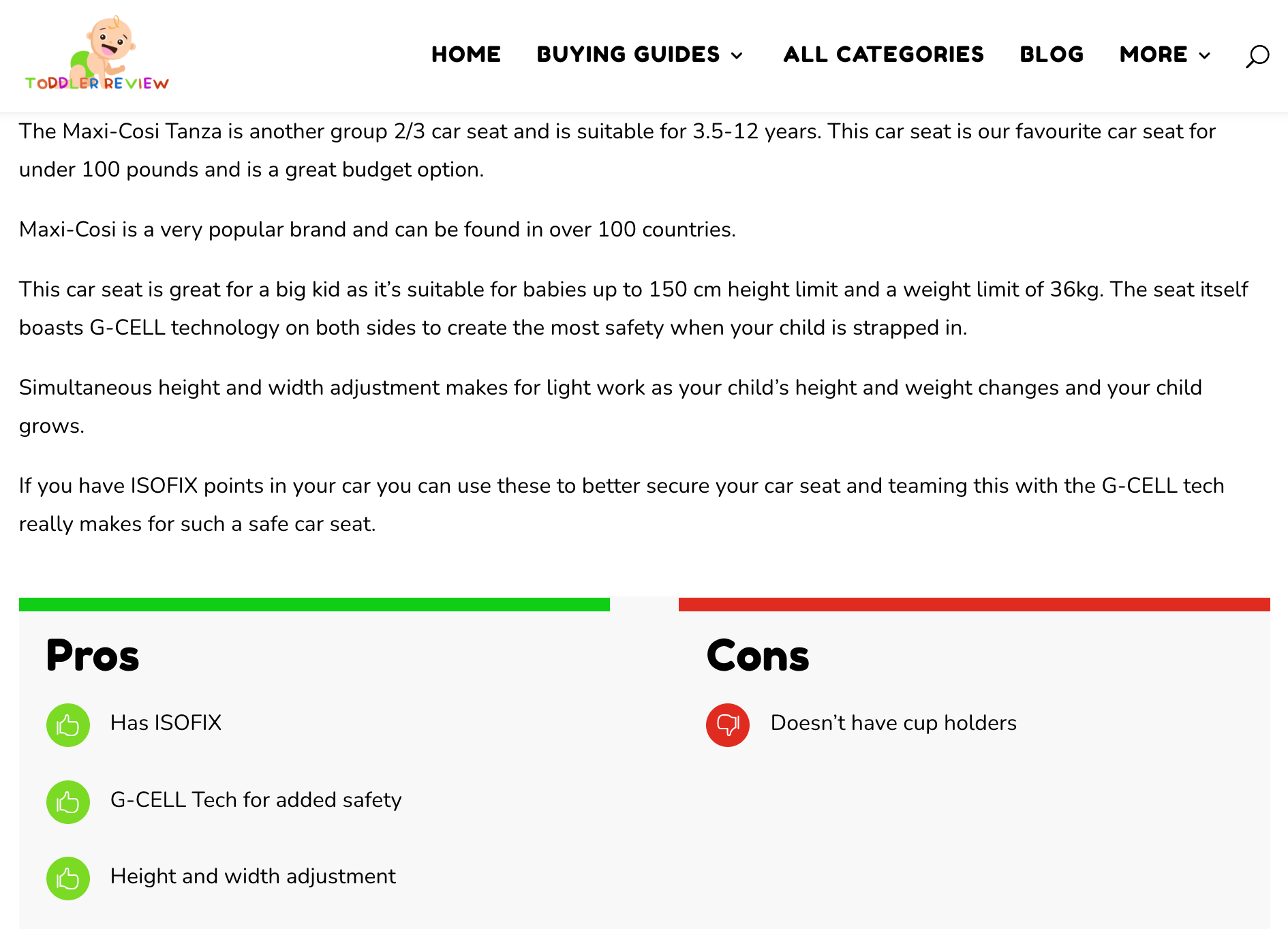
It’s readable and well constructed, but the content itself is just fluff. You can tell immediately that it’s words for the sake of words and that the author has never touched this product. They certainly don’t have any unique insights or genuine opinions about it.
Given that you can create “similar quality” content with AI tools, you may assume there’ll be a sudden and massive influx of low-quality content for Google to deal with.
Here are my two cents on this:
- I don’t think it’ll be as bad as many people think – Your mom isn’t going to suddenly start a content site just because AI tools can now do the heavy lifting. It’ll mostly be folks already in the industry using AI tools. So while there will definitely be more content being created, I don’t think it’ll be a crazy amount more.
- Even if I’m wrong, Google’s systems will deal with it – If your site is full of low-quality content, AI or not, Google will just lower your crawl budget to save resources. Remember, ChatGPT isn’t the first AI tool. People have been creating content with other tools like GPT2 for years, and Google has coped just fine so far.
Long story short, the search engine’s flood defense systems are robust enough to deal with the increased junk that AI throws their way.
Google has many search algorithms working behind the scenes to rank the best results for its users. Are they perfect? No. But I think we can all agree they do a good job on the whole.
For example, there are 717 million results for “lump on neck”—yet none of the top ones are from your average Joe. They’re all written by doctors and published on the sites of respected health brands. In other words, they have E-E-A-T.
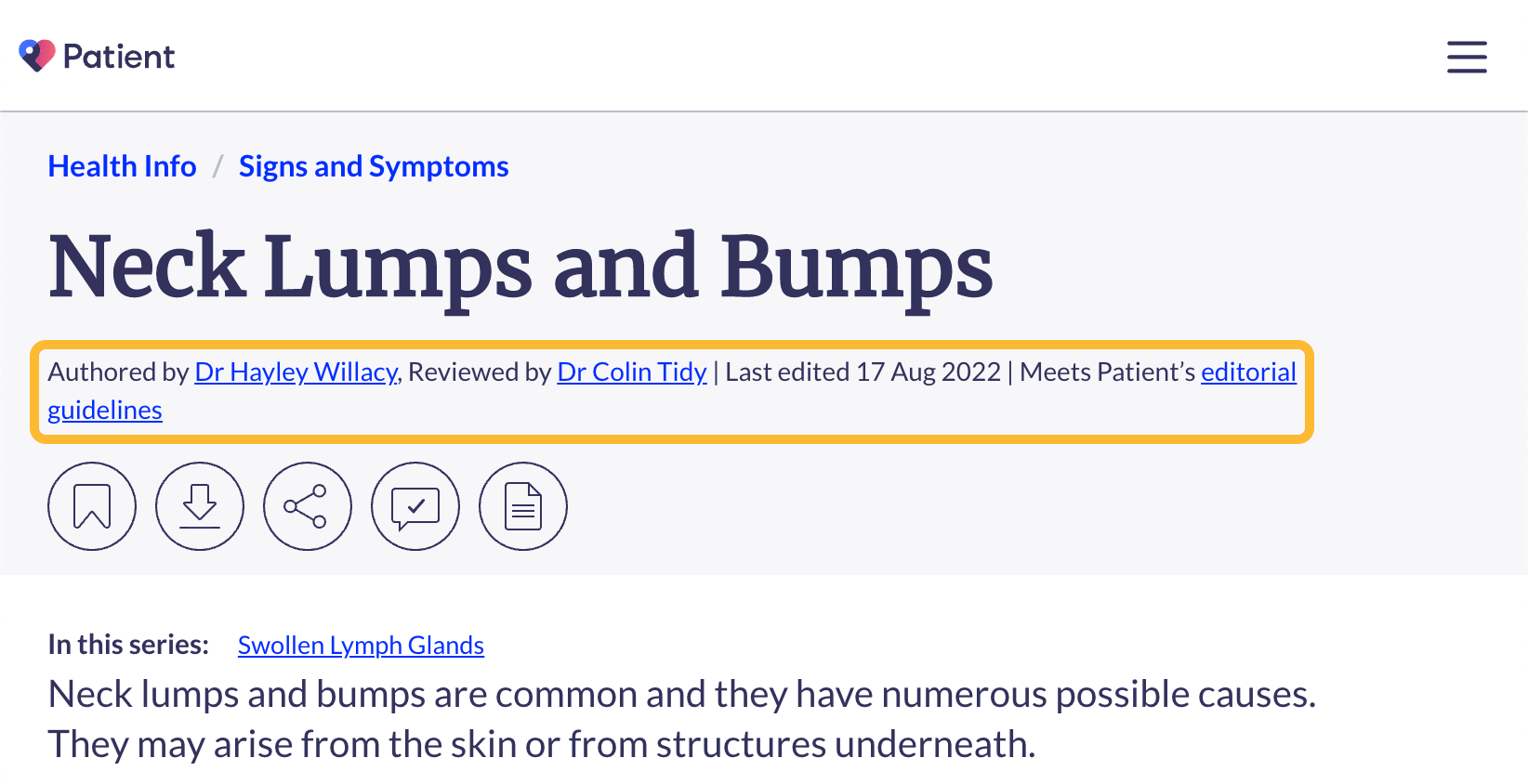
Of course, E-E-A-T isn’t a direct ranking factor, so let’s look at a couple of known direct ranking factors and discuss a couple of reasons why, on the whole, AI content won’t flummox them.
Backlinks
People link to content for all kinds of reasons, but I think these are the two most common:
- They already know and trust the author or brand.
- The content is the source of a unique idea or statistic.
Given that it takes years to earn trust in an industry (even if you only publish high-quality content), it’s not going to happen if you only publish low-end AI content.
As for content that says something unique, take a look at these “unique” link building tactics ChatGPT came up with:
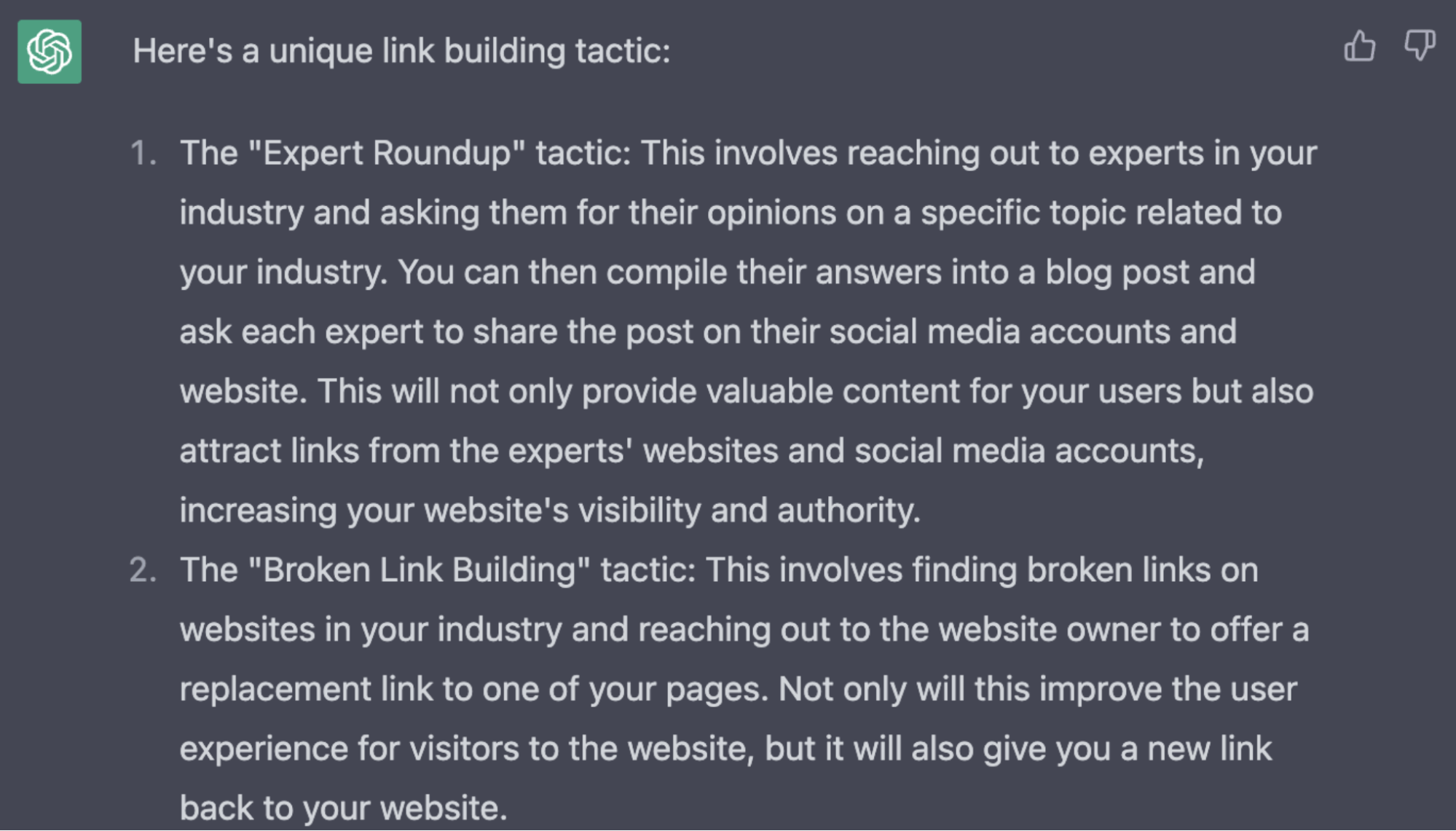
If you thought you heard about these 20 years ago, you’d be right. They’re not unique ideas at all. You’re going to have to come up with these on your own.
Helpful content system
Google’s helpful content system aims to boost the performance of content that gives visitors a satisfying experience while demoting content that doesn’t.
Here’s how Google says it works in a nutshell:
The system generates a site-wide signal that we consider among many other signals for ranking web pages. Our systems automatically identify content that seems to have little value, low-added value or is otherwise not particularly helpful to those doing searches.
Given that AI tools are trained on existing content, it’s basically impossible for them to “add value.” They can only summarize and rework ideas that are already out there (or that you give them).
Google also states that this is a sitewide signal. This means it should still negatively impact those who think, “Meh. I’ll just publish a load of AI content, see what sticks, then improve it.”
Google couldn’t be any clearer about this. Its documentation includes an entire section about how automation can help create helpful content.
Here’s an excerpt:
Not all use of automation, including AI generation, is spam. […] AI has the ability to power new levels of expression and creativity, and to serve as a critical tool to help people create great content for the web.
If you’re wondering how, let me share three examples.
AI can make your content interactive
Let’s say you wanted to rank in the U.K. for “UK tax brackets.” If we look at the top results, they’re all about the same. They list tax brackets and explain how to determine which one you’re in.

This is useful information, but you’ll struggle to calculate your personal tax liability in your head. You need a calculator, and it would probably be helpful if it was embedded right there in the post.
Before AI, unless you knew how to code, you’d have to hire a developer to do this for you. But now, with ChatGPT (and presumably other upcoming AI tools, like Google’s Bard), all you have to do is ask:

Here’s the output:
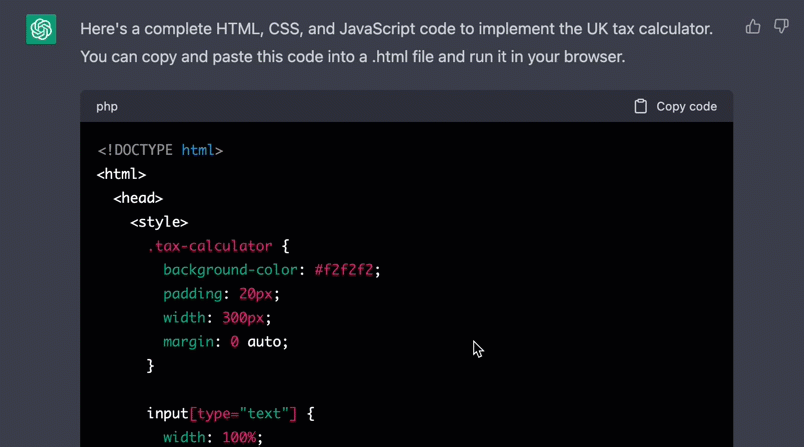
Using the free Code Snippets plugin for WordPress, I managed to embed this interactive calculator in a post without any coding knowledge whatsoever. You can view a live working demo here.
Sidenote.
The calculator doesn’t account for the tapered annual allowance that (currently) applies to income over £240K in the U.K. But you could probably get ChatGPT to add this with a few extra prompts.
AI can proofread stuff
Last year, we tested the quality of freelance writers based on their rates. The cheapest charged just $0.02 per word.
If we take a part of their content and ask ChatGPT to proofread it, it makes minor improvements for clarity:
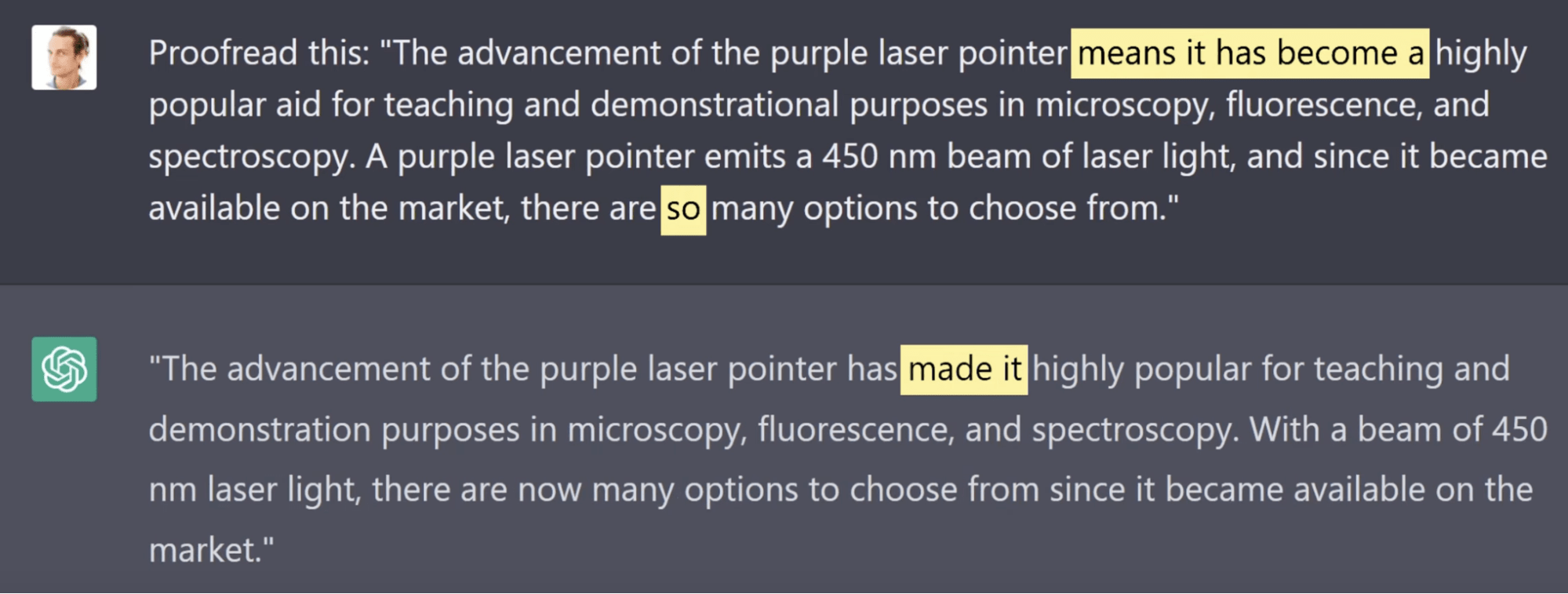
I’ve found this super helpful for improving spelling and grammatical issues in my drafts. Here it is correcting all of my typos and even capitalizing acronyms without me having to lift a finger:
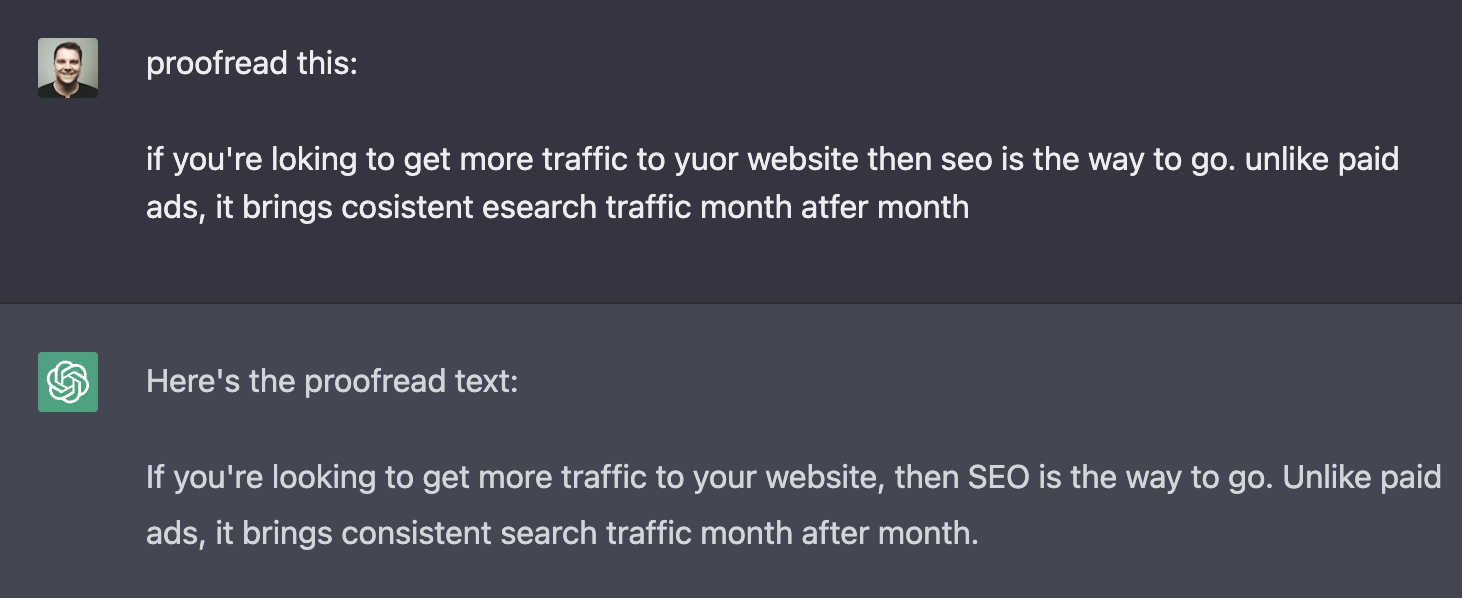
AI can explain things better (and faster) than you
Here’s what happened when I asked ChatGPT to explain and name a budgeting hack:
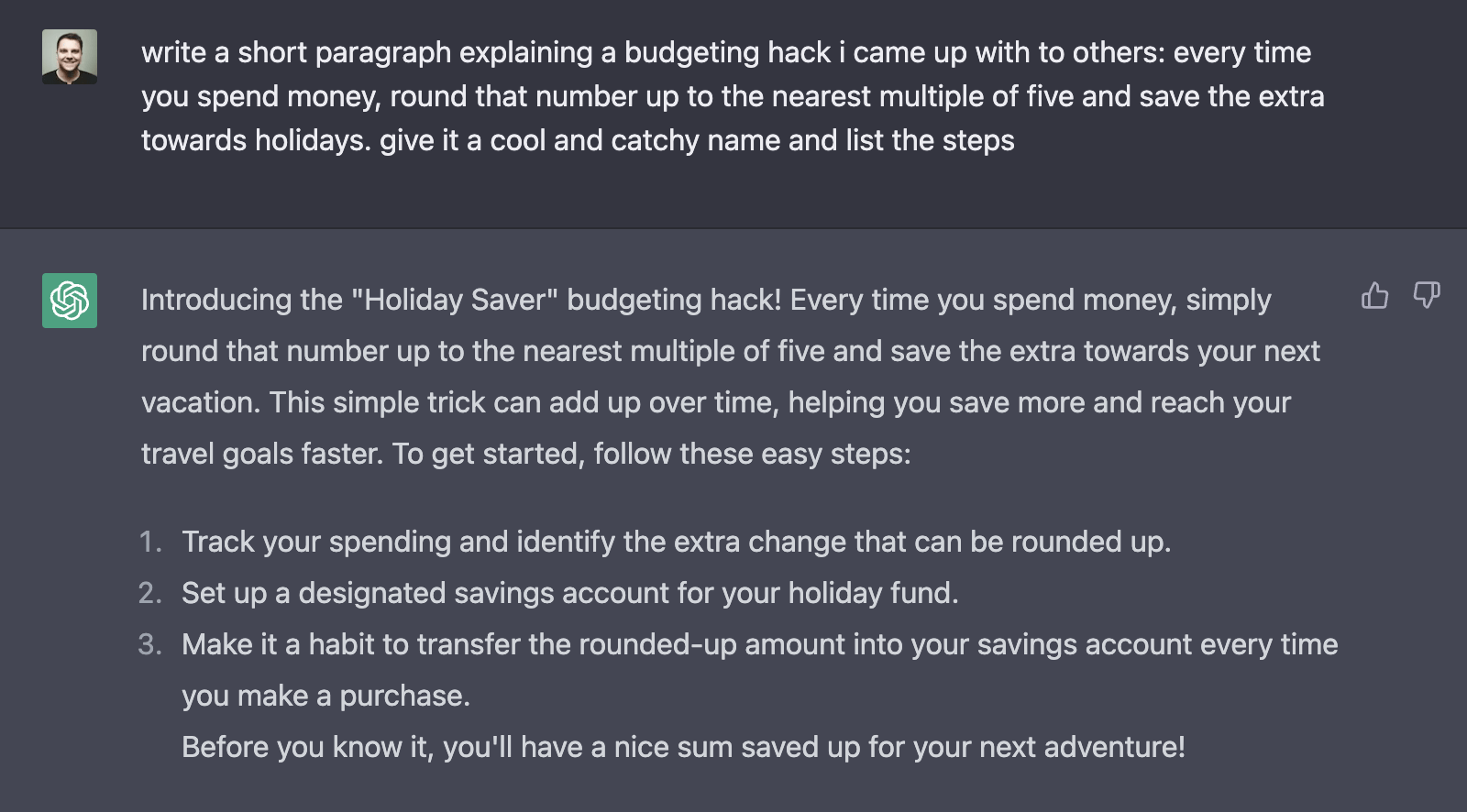
I don’t know about you, but I think it explained my admittedly lame (and somewhat unrealistic in this economic climate) “hack” pretty well. Sure, the name isn’t that great, but we can always ask ChatGPT for some other ideas:
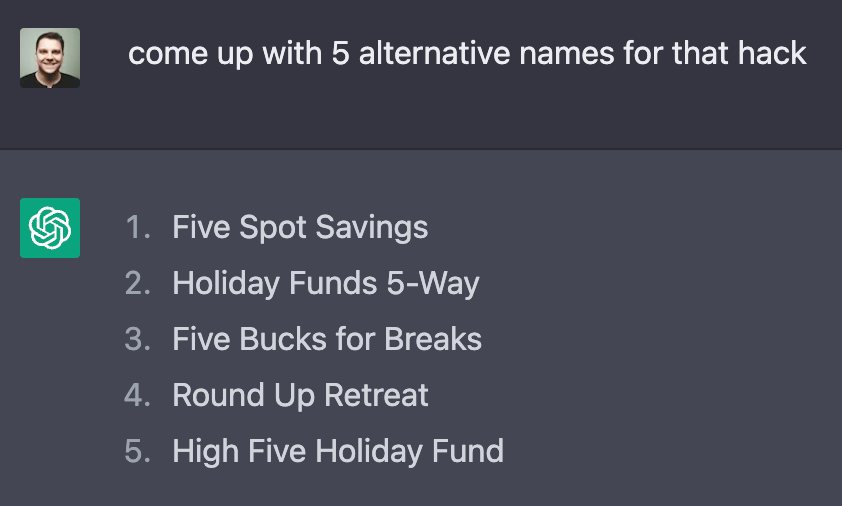
“Round Up Retreat” seems pretty catchy to me.
No. Bad AI content will rank for some keywords, just as low-quality content written by humans does. Here are two reasons why.
Google isn’t perfect
I’m sure some of you rolled your eyes when I mentioned backlinks and “helpful content.” After all, you can always buy backlinks (although we don’t recommend it), and there are plenty of sites with unhelpful content still thriving.
This is, in part, because Google’s algorithms aren’t perfect.
You can think of Google Search as one of those toys with holes that only let through specific shapes. They work, but if you spend some time twisting and turning the shapes (or grab a hammer), you can often force the wrong ones through.
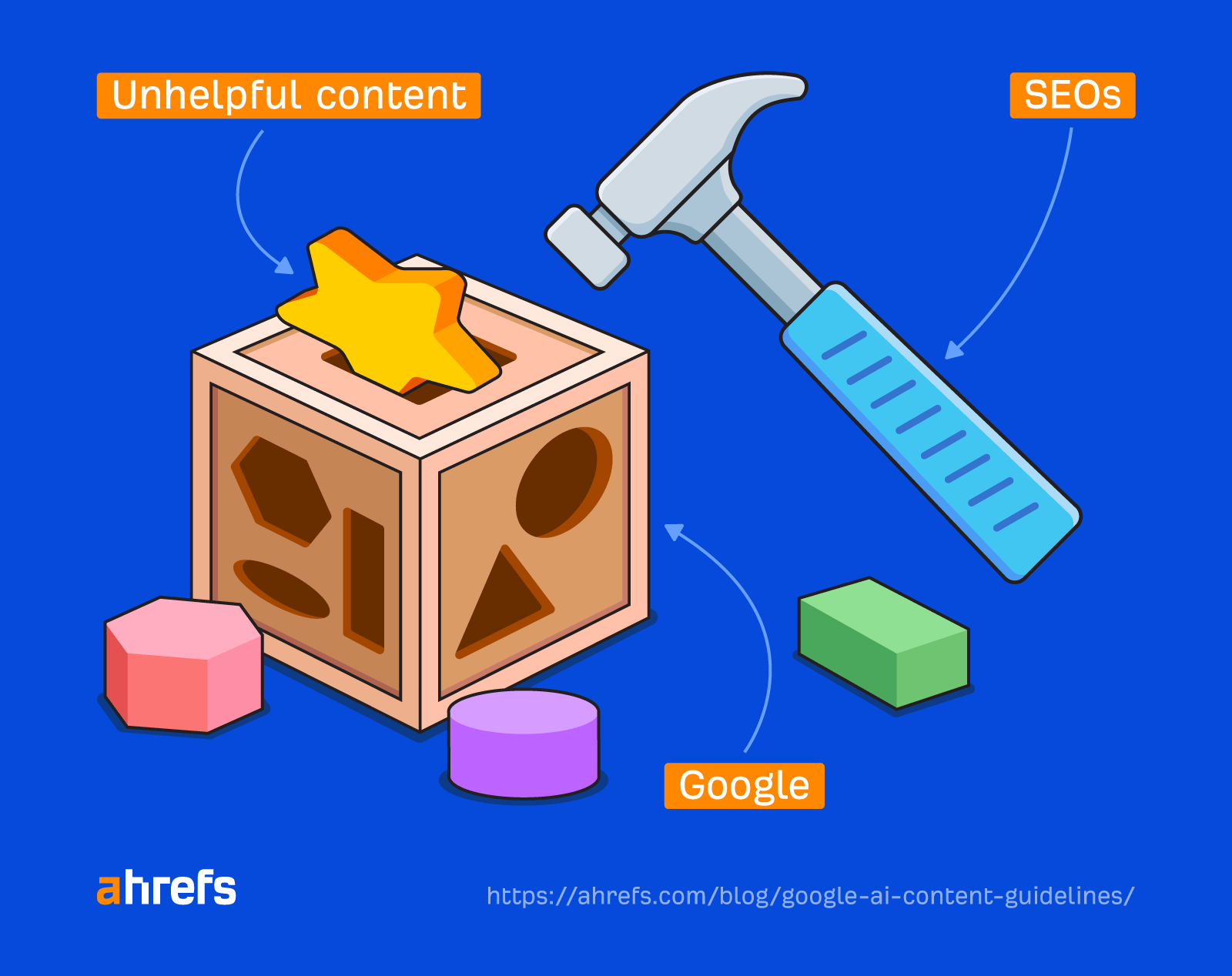
Just like these toys, Google’s algorithms aren’t going to catch all low-quality content—AI or not.
Google can only rank good content if it exists
Google’s algorithms are designed to surface the best results, but you’d be forgiven for thinking otherwise based on some SERPs.
For example, here’s the top result for “best headphones for big heads”:

You can see that it’s bog-standard affiliate content. Lots of words, no unique insights, and stock images. In other words, the level of quality that AI tools could easily write.
So how can this possibly be the best result for the topic?
I think the answer is simple. The topic just isn’t lucrative enough to incentivize meaningful competition.
For example, the top-ranking page only gets an estimated 430 monthly search visits:
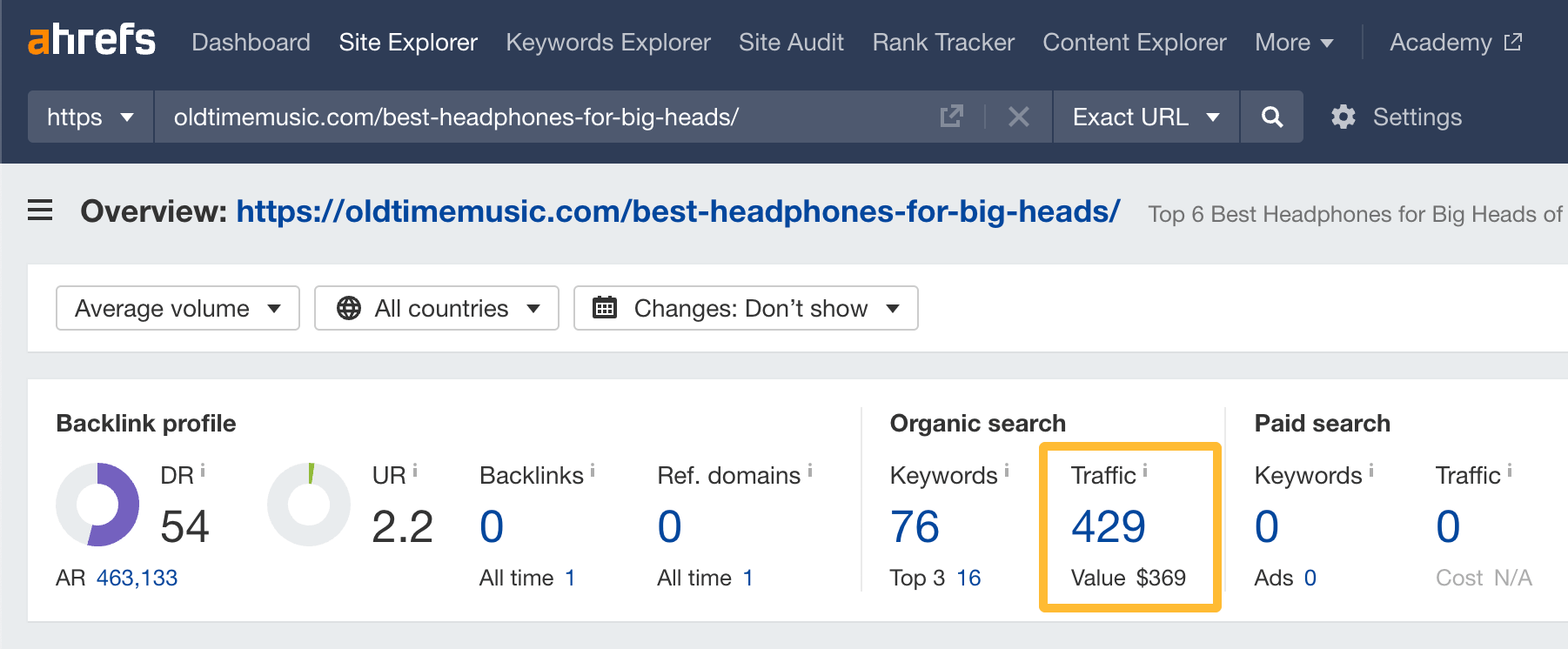
Let’s be (very) generous and assume that:
- Each recommended pair of headphones costs $200 on average.
- 10% of visits lead to purchases.
- The site gets 3% commissions from Amazon.
Do the math: $200 * 43 (10% of 430 visits) * 3% = $258/month.
This isn’t bad, but I still doubt anyone would be willing to buy and test dozens of $200 headphones to create exceptional content for this keyword. This creates a void of truly useful results for Google to choose from and a low bar for the “best” result.
In fact, ChatGPT could probably create content as good as the current top result.
Final thoughts
Marie Haynes summarizes Google’s stance on AI content well in this tweet:
Google’s taking this stance because it knows AI tools are like power tools. If you’re a carpenter, they’ll help you get the shelves up faster and with a better finish. If not, they’ll just help you botch the job faster—and take one of your fingers in the process.
But while some SEOs will lose a metaphorical finger (or two) by jumping knee-deep into AI content, others will make it work. Google’s algorithms are good, not perfect. So expect to see a few articles on shoddy AI content sites ranking like crazy and making bank.
Inevitably, though, these sites will tank. Not because they published AI content, but because they published low-quality content that never deserved to rank anyway.
Got questions? Disagree with me? Ping me on Twitter.
SEO
Google Cautions On Blocking GoogleOther Bot

Google’s Gary Illyes answered a question about the non-search features that the GoogleOther crawler supports, then added a caution about the consequences of blocking GoogleOther.
What Is GoogleOther?
GoogleOther is a generic crawler created by Google for the various purposes that fall outside of those of bots that specialize for Search, Ads, Video, Images, News, Desktop and Mobile. It can be used by internal teams at Google for research and development in relation to various products.
The official description of GoogleOther is:
“GoogleOther is the generic crawler that may be used by various product teams for fetching publicly accessible content from sites. For example, it may be used for one-off crawls for internal research and development.”
Something that may be surprising is that there are actually three kinds of GoogleOther crawlers.
Three Kinds Of GoogleOther Crawlers
- GoogleOther
Generic crawler for public URLs - GoogleOther-Image
Optimized to crawl public image URLs - GoogleOther-Video
Optimized to crawl public video URLs
All three GoogleOther crawlers can be used for research and development purposes. That’s just one purpose that Google publicly acknowledges that all three versions of GoogleOther could be used for.
What Non-Search Features Does GoogleOther Support?
Google doesn’t say what specific non-search features GoogleOther supports, probably because it doesn’t really “support” a specific feature. It exists for research and development crawling which could be in support of a new product or an improvement in a current product, it’s a highly open and generic purpose.
This is the question asked that Gary narrated:
“What non-search features does GoogleOther crawling support?”
Gary Illyes answered:
“This is a very topical question, and I think it is a very good question. Besides what’s in the public I don’t have more to share.
GoogleOther is the generic crawler that may be used by various product teams for fetching publicly accessible content from sites. For example, it may be used for one-off crawls for internal research and development.
Historically Googlebot was used for this, but that kind of makes things murky and less transparent, so we launched GoogleOther so you have better controls over what your site is crawled for.
That said GoogleOther is not tied to a single product, so opting out of GoogleOther crawling might affect a wide range of things across the Google universe; alas, not Search, search is only Googlebot.”
It Might Affect A Wide Range Of Things
Gary is clear that blocking GoogleOther wouldn’t have an affect on Google Search because Googlebot is the crawler used for indexing content. So if blocking any of the three versions of GoogleOther is something a site owner wants to do, then it should be okay to do that without a negative effect on search rankings.
But Gary also cautioned about the outcome that blocking GoogleOther, saying that it would have an effect on other products and services across Google. He didn’t state which other products it could affect nor did he elaborate on the pros or cons of blocking GoogleOther.
Pros And Cons Of Blocking GoogleOther
Whether or not to block GoogleOther doesn’t necessarily have a straightforward answer. There are several considerations to whether doing that makes sense.
Pros
Inclusion in research for a future Google product that’s related to search (maps, shopping, images, a new feature in search) could be useful. It might be helpful to have a site included in that kind of research because it might be used for testing something good for a site and be one of the few sites chosen to test a feature that could increase earnings for a site.
Another consideration is that blocking GoogleOther to save on server resources is not necessarily a valid reason because GoogleOther doesn’t seem to crawl so often that it makes a noticeable impact.
If blocking Google from using site content for AI is a concern then blocking GoogleOther will have no impact on that at all. GoogleOther has nothing to do with crawling for Google Gemini apps or Vertex AI, including any future products that will be used for training associated language models. The bot for that specific use case is Google-Extended.
Cons
On the other hand it might not be helpful to allow GoogleOther if it’s being used to test something related to fighting spam and there’s something the site has to hide.
It’s possible that a site owner might not want to participate if GoogleOther comes crawling for market research or for training machine learning models (for internal purposes) that are unrelated to public-facing products like Gemini and Vertex.
Allowing GoogleOther to crawl a site for unknown purposes is like giving Google a blank check to use your site data in any way they see fit outside of training public-facing LLMs or purposes related to named bots like GoogleBot.
Takeaway
Should you block GoogleOther? It’s a coin toss. There are possible potential benefits but in general there isn’t enough information to make an informed decision.
Listen to the Google SEO Office Hours podcast at the 1:30 minute mark:
Featured Image by Shutterstock/Cast Of Thousands
SEO
AI Search Boosts User Satisfaction

A new study finds that despite concerns about AI in online services, users are more satisfied with search engines and social media platforms than before.
The American Customer Satisfaction Index (ACSI) conducted its annual survey of search and social media users, finding that satisfaction has either held steady or improved.
This comes at a time when major tech companies are heavily investing in AI to enhance their services.
Search Engine Satisfaction Holds Strong
Google, Bing, and other search engines have rapidly integrated AI features into their platforms over the past year. While critics have raised concerns about potential negative impacts, the ACSI study suggests users are responding positively.
Google maintains its position as the most satisfying search engine with an ACSI score of 81, up 1% from last year. Users particularly appreciate its AI-powered features.
Interestingly, Bing and Yahoo! have seen notable improvements in user satisfaction, notching 3% gains to reach scores of 77 and 76, respectively. These are their highest ACSI scores in over a decade, likely due to their AI enhancements launched in 2023.
The study hints at the potential of new AI-enabled search functionality to drive further improvements in the customer experience. Bing has seen its market share improve by small but notable margins, rising from 6.35% in the first quarter of 2023 to 7.87% in Q1 2024.
Customer Experience Improvements
The ACSI study shows improvements across nearly all benchmarks of the customer experience for search engines. Notable areas of improvement include:
- Ease of navigation
- Ease of using the site on different devices
- Loading speed performance and reliability
- Variety of services and information
- Freshness of content
These improvements suggest that AI enhancements positively impact various aspects of the search experience.
Social Media Sees Modest Gains
For the third year in a row, user satisfaction with social media platforms is on the rise, increasing 1% to an ACSI score of 74.
TikTok has emerged as the new industry leader among major sites, edging past YouTube with a score of 78. This underscores the platform’s effective use of AI-driven content recommendations.
Meta’s Facebook and Instagram have also seen significant improvements in user satisfaction, showing 3-point gains. While Facebook remains near the bottom of the industry at 69, Instagram’s score of 76 puts it within striking distance of the leaders.
Challenges Remain
Despite improvements, the study highlights ongoing privacy and advertising challenges for search engines and social media platforms. Privacy ratings for search engines remain relatively low but steady at 79, while social media platforms score even lower at 73.
Advertising experiences emerge as a key differentiator between higher- and lower-satisfaction brands, particularly in social media. New ACSI benchmarks reveal user concerns about advertising content’s trustworthiness and personal relevance.
Why This Matters For SEO Professionals
This study provides an independent perspective on how users are responding to the AI push in online services. For SEO professionals, these findings suggest that:
- AI-enhanced search features resonate with users, potentially changing search behavior and expectations.
- The improving satisfaction with alternative search engines like Bing may lead to a more diverse search landscape.
- The continued importance of factors like content freshness and site performance in user satisfaction aligns with long-standing SEO best practices.
As AI becomes more integrated into our online experiences, SEO strategies may need to adapt to changing user preferences.
Featured Image: kate3155/Shutterstock
SEO
Google To Upgrade All Retailers To New Merchant Center By September

Google has announced plans to transition all retailers to its updated Merchant Center platform by September.
This move will affect e-commerce businesses globally and comes ahead of the holiday shopping season.
The Merchant Center is a tool for online retailers to manage how their products appear across Google’s shopping services.
Key Changes & Features
The new Merchant Center includes several significant updates.
Product Studio
An AI-powered tool for content creation. Google reports that 80% of current users view it as improving efficiency.
This feature allows retailers to generate tailored product assets, animate still images, and modify existing product images to match brand aesthetics.
It also simplifies tasks like background removal and image resolution enhancement.
Centralized Analytics
A new tab consolidating various business insights, including pricing data and competitive analysis tools.
Retailers can access pricing recommendations, competitive visibility reports, and retail-specific search trends, enabling them to make data-driven decisions and capitalize on popular product categories.
Redesigned Navigation
Google claims the new interface is more intuitive and cites increased setup success rates for new merchants.
The platform now offers simplified website verification processes and can pre-populate product information during setup.
Initial User Response
According to Google, early adopters have shown increased engagement with the platform.
The company reports a 25% increase in omnichannel merchants adding product offers in the new system. However, these figures have yet to be independently verified.
Jeff Harrell, Google’s Senior Director of Merchant Shopping, states in an announcement:
“We’ve seen a significant increase in retention and engagement among existing online merchants who have moved to the new Merchant Center.”
Potential Challenges and Support
While Google emphasizes the upgrade’s benefits, some retailers, particularly those comfortable with the current version, may face challenges adapting to the new system.
The upgrade’s mandatory nature could raise concerns among users who prefer the existing interface or have integrated workflows based on the current system.
To address these concerns, Google has stated that it will provide resources and support to help with the transition. This includes tutorial videos, detailed documentation, and access to customer support teams for troubleshooting.
Industry Context
This update comes as e-commerce platforms evolve, with major players like Amazon and Shopify enhancing their seller tools. Google’s move is part of broader efforts to maintain competitiveness in the e-commerce services sector.
The upgrade could impact consumers by improving product listings and providing more accurate information across Google’s shopping services.
For the e-commerce industry as a whole, it signals a continued push towards AI-driven tools and data-centric decision-making.
Transition Timeline
Google states that retailers will be automatically upgraded by September if they still need to transition.
The company advises users to familiarize themselves with the new features before the busy holiday shopping period.
Featured Image: BestForBest/Shutterstock
-

 SEARCHENGINES5 days ago
SEARCHENGINES5 days agoBillions Of Google goo.gl URLs To 404 In The Future
-
SEARCHENGINES4 days ago
Daily Search Forum Recap: July 22, 2024
-

 SEARCHENGINES7 days ago
SEARCHENGINES7 days agoGoogle Core Update Coming, Ranking Volatility, Bye Search Notes, AI Overviews, Ads & More
-

 SEO5 days ago
SEO5 days ago11 Copyscape Alternatives To Check Plagiarism
-
SEARCHENGINES3 days ago
Daily Search Forum Recap: July 23, 2024
-

 SEO6 days ago
SEO6 days agoGoogle Warns Of Last Chance To Export Notes Search Data
-

 AFFILIATE MARKETING6 days ago
AFFILIATE MARKETING6 days agoThe Top 5 AI Tools That Can Revolutionize Your Workflow and Boost Productivity
-

 SEO4 days ago
SEO4 days agoSystem Builders – How AI Changes The Work Of SEO
















You must be logged in to post a comment Login